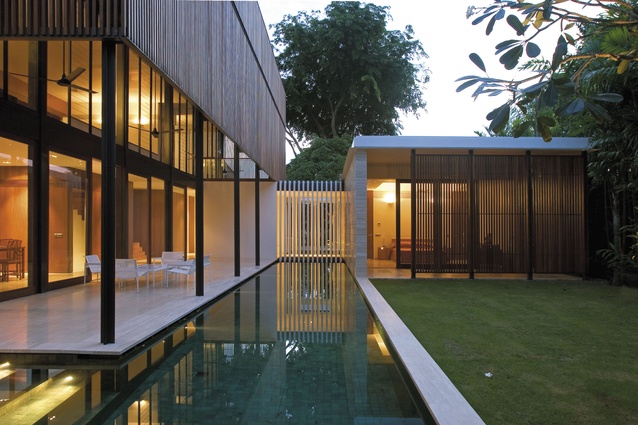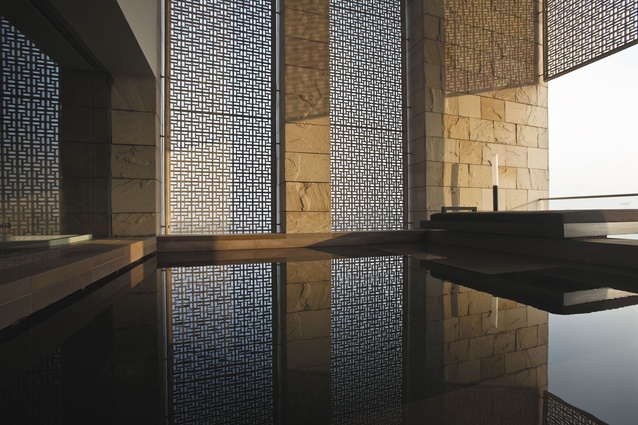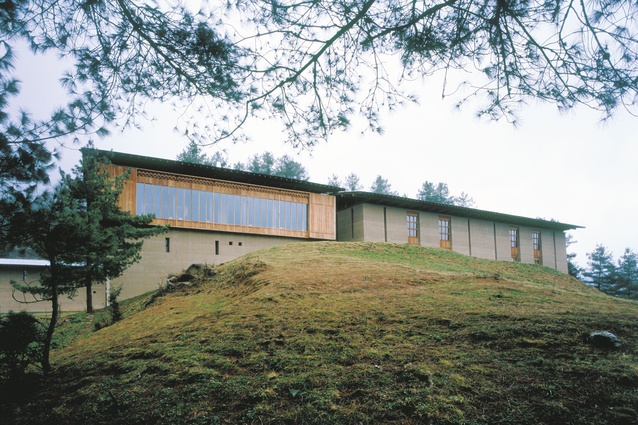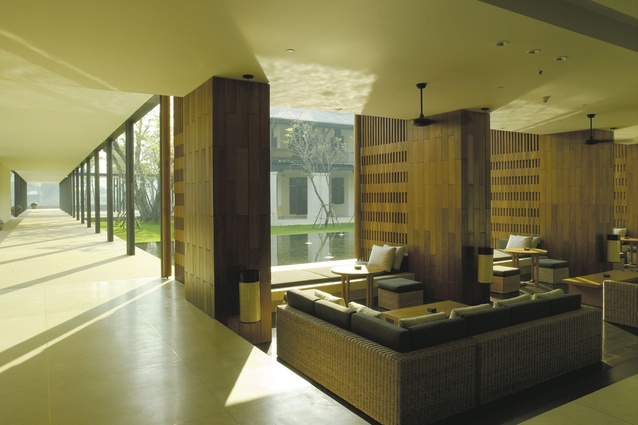The light master
The Australian architect Kerry Hill has earned an enviable reputation in his home country and throughout Southeast Asia. A master of light, his total commitment to place, climate and materiality is evident throughout his work. Architecture NZ interviewed Hill in Auckland when he judged the AAA Cavalier Bremworth Unbuilt Architecture Awards recently.
You’ve been living in Singapore for about 30 years; it’s a very green country now, what is it like to live there?
Singapore is the easiest city to live in. The infrastructure is fantastic, the government is efficient and well managed, and it is a great service centre for the rest of Southeast Asia. Everything is electronic so you can use a card for everything. It also helps that a lot of people are very wealthy and there is a good welfare benefit programme and government-assisted housing. Singapore is now a model city for China.
As a professor at universities in both Australia and Singapore, how do you compare the standard of work there with the standard of student entries in this year’s AAA Cavalier Bremworth Awards?
The standard of the student work is very high; it’s as good as any I’ve seen. The unbuilt work was more disappointing but then there are more restrictions and parameters to work within in that category, whereas the student work is unrestrained.
What are your thoughts about what is being taught in architecture schools?
Computer presentations ensure that students are skilful and immediately employable; however, there are pros and cons for the profession. If you are just good on the computer, you become very technical but I don’t think it is good for the person. I believe that to think architecturally you need to understand drawing. Drawing is a tool: an extension of the brain. The best graduates are ambidextrous: they can use a computer and still draw beautifully; doing both at the same time produces the best work. It is a great pity that the art of drawing is dying out; it should be encouraged. I have also seen some homogenous presentations in architecture schools. Tutors and lecturers tend to use students as research sources for their own research, which sets an agenda. Fortunately, I didn’t see any of that in these awards; they were allowed to be more themselves.
There are now a number of large Australian practices with branches and major projects all around the world. New Zealand firms haven’t gone down that road – do you think they should?
Well, you need the financial set-up, and the hiring and firing can be quite ruthless. Some of it is not for the longterm. It is ‘practice’ for the moment and can be as damaging as it is good. I don’t consider it a serious architectural endeavour. There is no commitment to the region being worked in. It is like a labrador that eats whatever you give it. It is driven by economic cycles; the firms come and leave in a couple of years, which makes you vulnerable to commercial ups and downs. When one region is down, you’re forced to flip to another, so it’s really architecture as business, rather than business as architecture.
Where is your practice Kerry Hill Architects based?
We have just two offices, in Singapore and Freemantle, Western Australia, but they are part of the same culture and there is a natural synergy.
Your practice has won quite a few competitions recently?
Yes, a variety of work comes through the competition process. We recently won five out of 10, which we are happy with. (In the past) we worked mainly on hotels for Adrian Zecha until 2010 – I think we’ve built about 23 hotels now – then we decided to enter more competitions as most public buildings are won this way. While we still work on selected hotels, the competition process has changed the direction of the firm; it has taught us a lot.
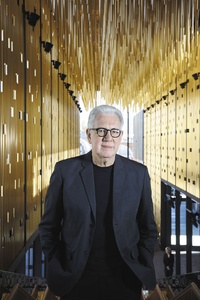
What are you currently working on?
We recently finished the State Theatre Centre in Perth, Western Australia, and we won the Royal Military Academy in Jordan. Funnily enough, that (project) came about through a different competition for a performing arts centre in Jordan that we lost to Zaha Hadid, but the client invited us back about a year later to design the academy. We also have 11 houses on the go at present and they are a test bed for ideas; they help us to come up with themes which we bring into our larger projects.
Which elements do you cross-pollinate?
Elements like: planning principles, circulation systems, connecting technical components, natural cross-ventilation and moving shutters. We take these (elements) into high-rise and multi-residential developments and, while there are different problems when you design a 500-room hotel, we still learn a lot of lessons and transport ideas back and forth.
What regions and countries are you working in at the moment?
Mainly Australia, Singapore and India, and some projects in the Middle East and China.
What is it like to work in the Middle East?
I enjoy the architectural potential of the Middle East; they have a rich architectural heritage which, combined with the climate and desert, throws up possibilities for strong, contemporary architectural interpretation.
How do you approach work in different countries?
Our approach to planning is the same wherever we are; it makes no difference. We take on the nuances through materiality, investigating building traditions, observing where it exists and then contemporising them through our own manner of thinking. For example, in Calcutta, India, there is no traditional architecture except for the British Colonial buildings, so we shuttered our buildings using traditional terracotta to create the louvres. We drew on a local tradition but contemporised it, while still supporting the existing cottage industry. In Dubai, we created stone screens using high-pressure water, rather than carving it. In Bhutan, we replaced traditional mud with reinforced stabilised earth, as it is more earthquake resistant. We took some of the local construction team to Australia to learn what to do. It is an economical construction technique. The Bhutanese government is now building their schools in this way.
How did you interpret Bhutanese traditions?
Our buildings in Bhutan are Bhutanese in spirit but we do not replicate their high decoration and colourful nature. There was a furore when we first built there as the building was devoid of what they would consider to be the traditional Bhutanese elements. While we broke the barrier, we didn’t push the boundaries as much as possible as we had to work within government restrictions. But I think, through the contemporisation of materials, we can make a contribution. As an architect, you have to be cautious of working in newly developed areas as they can be in a hurry. You have to be able to pick and choose and identify those with serious architectural intent, rather than those in a hurry. Intuition plays an important part of the decision-making.

